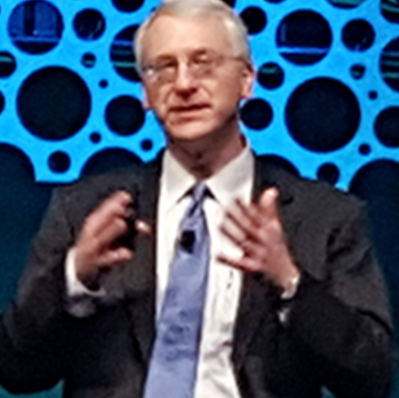 Digital health tools and apps are all the rage these days but that's hardly to say they're a new phenomenon, according to Partners HealthCare vice president of connected health Dr. Joseph Kvedar.
Digital health tools and apps are all the rage these days but that's hardly to say they're a new phenomenon, according to Partners HealthCare vice president of connected health Dr. Joseph Kvedar.
Kvedar, in fact, has been working to apply connected health technologies to patient care for more than 20 years. Back then, mobile devices encompassed such leading-edge tools as the Sony Walkman, Palm Pilots, expensive cameras that captured images of less than 1 megapixel, brown box PCs, and big cell phones that only made calls.
"We had this idea for a compelling way to deliver care," Kvedar said here at the Connected Health Conference on December 13. And while the technologies have changed since the mid-1990's, that vision remains.
Massachusetts General Hospital, for instance has telehealth programs including virtual visits, is conducting mainstream home heart failure telemonitoring and working on diabetes and blood pressure programs.
"This is on the road map and it will happen," Kvedar said of the diabetes and blood pressure initiative. "It's about a year from being mainstream."
Kvedar added that the broader connected health market is set to grow in size and scope of technologies that healthcare organizations can use.
Reena Sanger, Ipsos head of digital and connected health, gave the audience an exclusive first look at the findings within its Global Personal Connected Health Trends 2016 – predicting that by 2020 the market will be valued at $61 billion annually.
Sanger explained that what healthcare lacks is objective data, cost is of course a barrier to adoption of these technologies, but the most important issue is a lack of awareness about what digital health tools can do for individuals.
"Something radical is going to happen," Sanger said. "We want to make health personal, systems as they are need to change."
To move forward, healthcare organizations need to consider clinicians and caregivers as well as patients because consumers won't use the tools consistently and widely without support from doctors.
"We have to build more into the software to engage people and take the burden of enrollment away from clinicians by making it easier for patients. That gets into the realm of population health," said Kvedar.
Amida Technology CEO Peter Levin, meanwhile, said that the sharing of patient data needs to be standardized much the way railroads, gasoline and electricity have been.
Not having perfect interoperability doesn't mean you cannot communicate, said Levin, who was formerly the CTO of the U.S. Department of Veterans Affairs.
"Let's teach doctors to share records with patients and people they trust," Levin said. "Fracking your data shouldn't be so hard."
Kvedar added that much work remains but noted that cellphones are now smart, desktops are disappearing and cutting-edge technologies like virtual reality are coming."The world is a very different place," Kvedar said. "The technologies have started to catch up to the vision."














